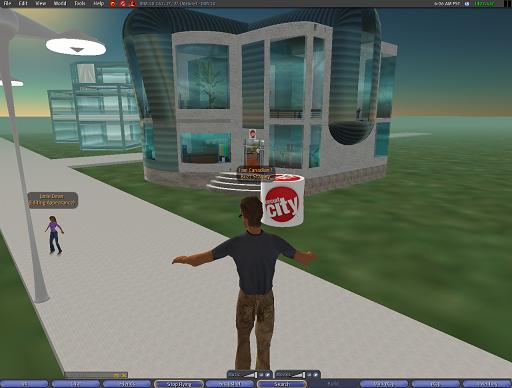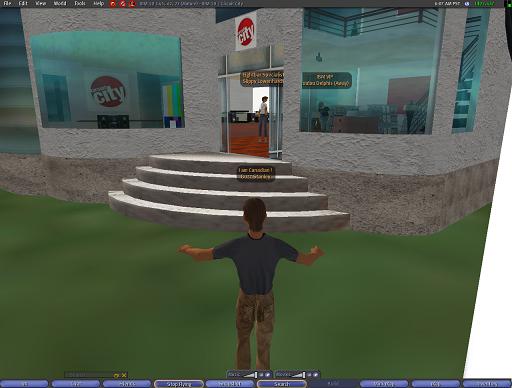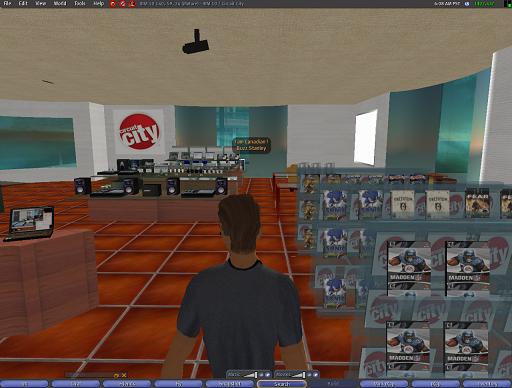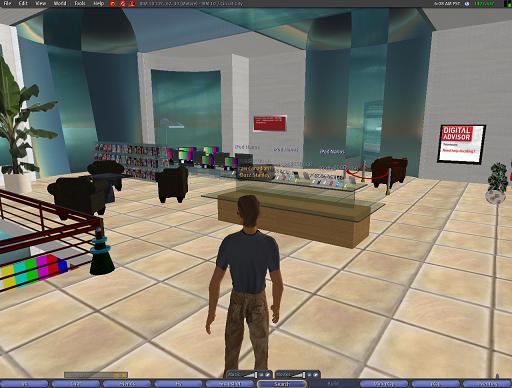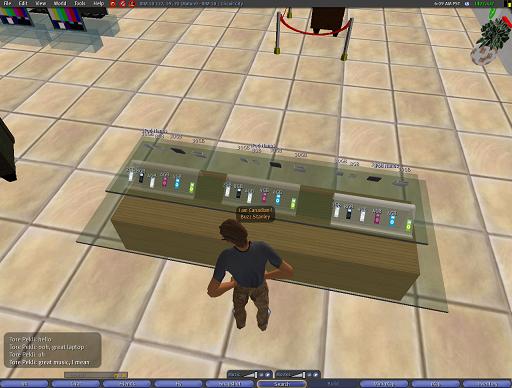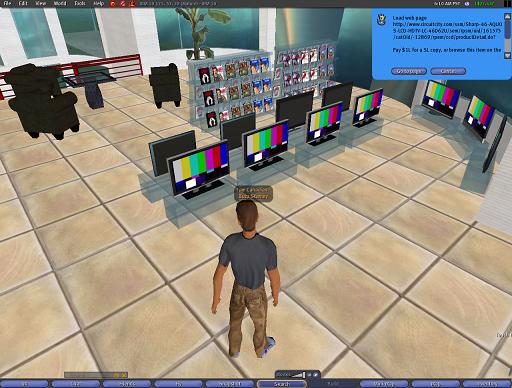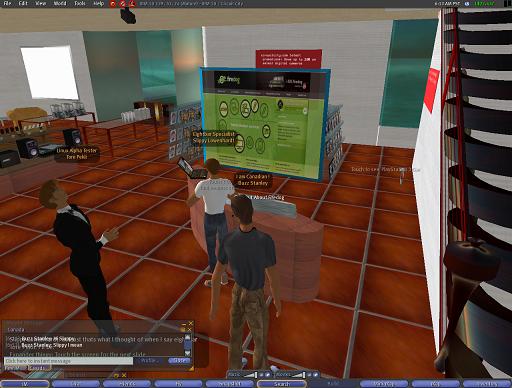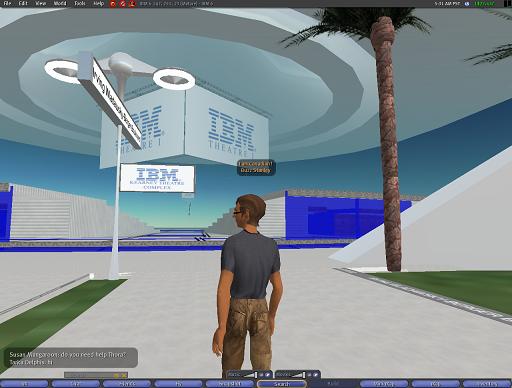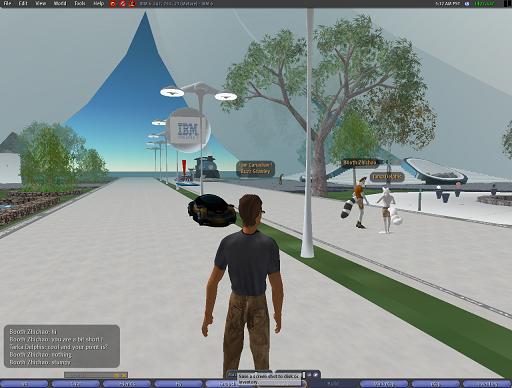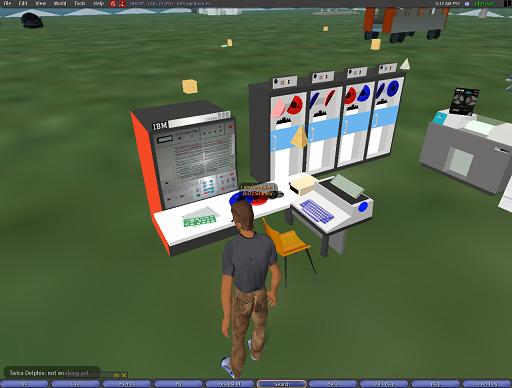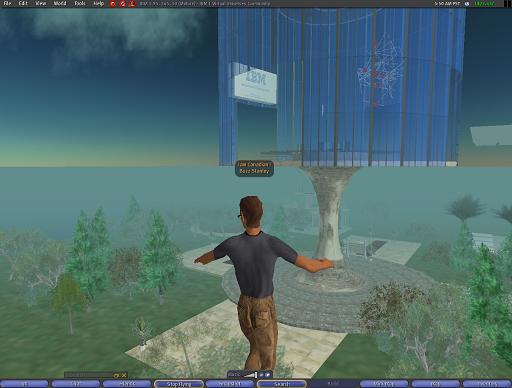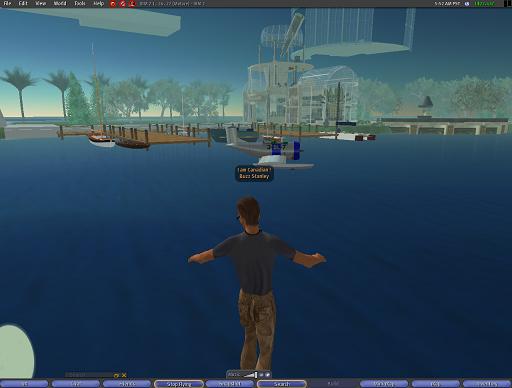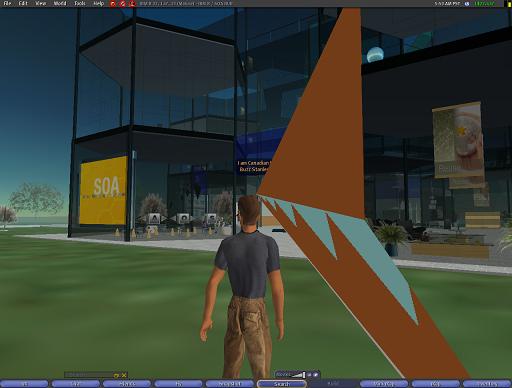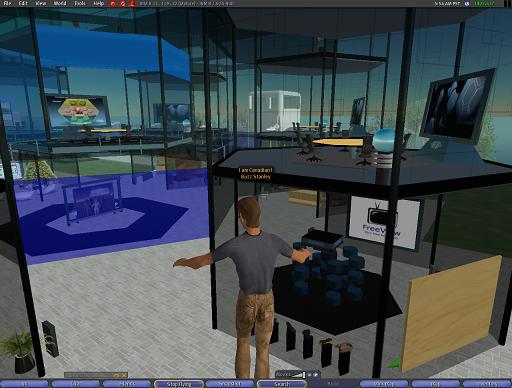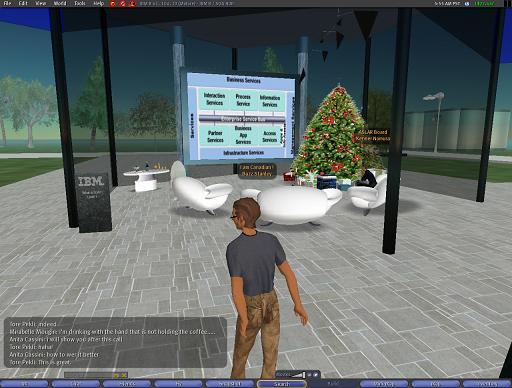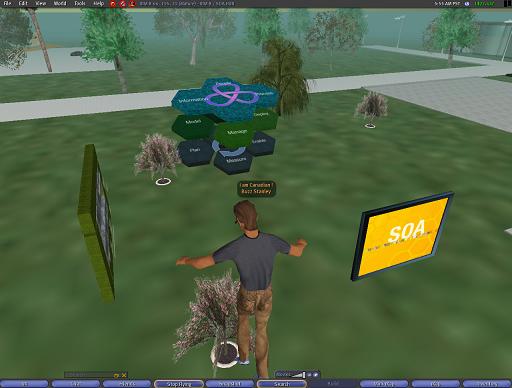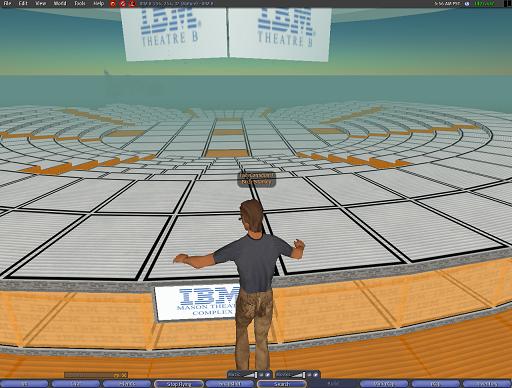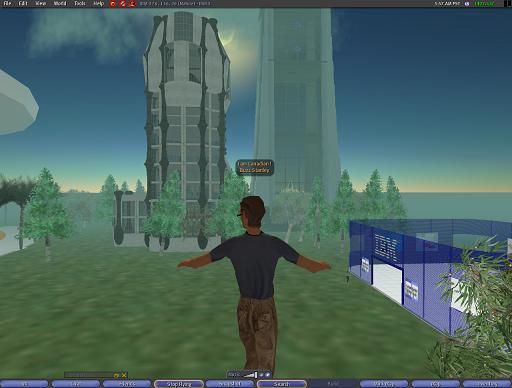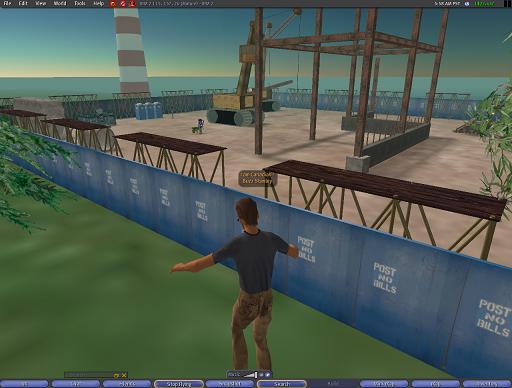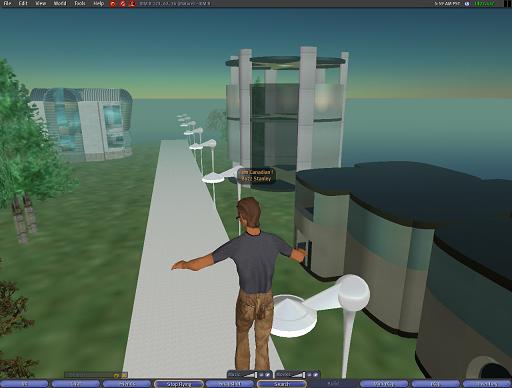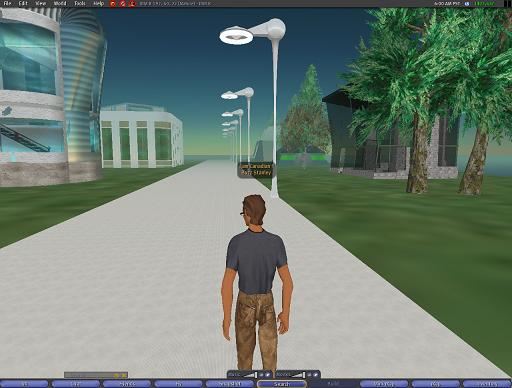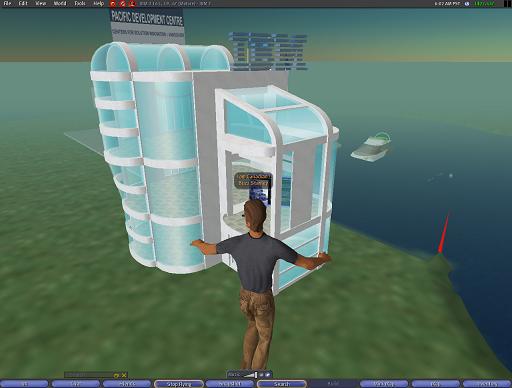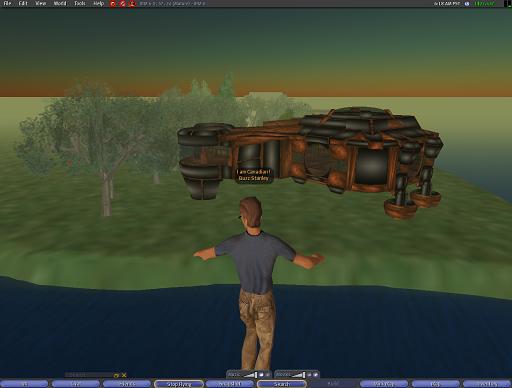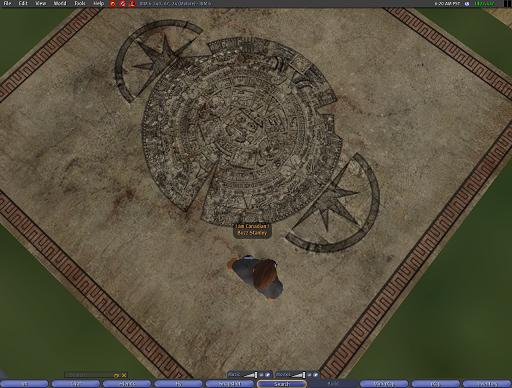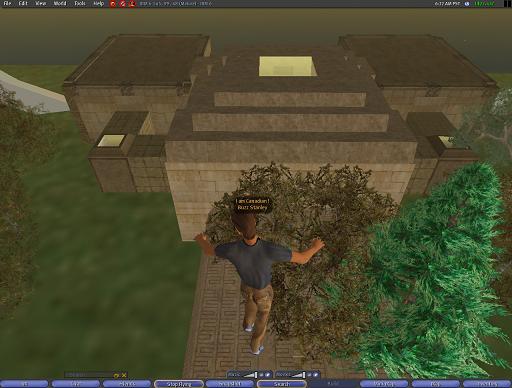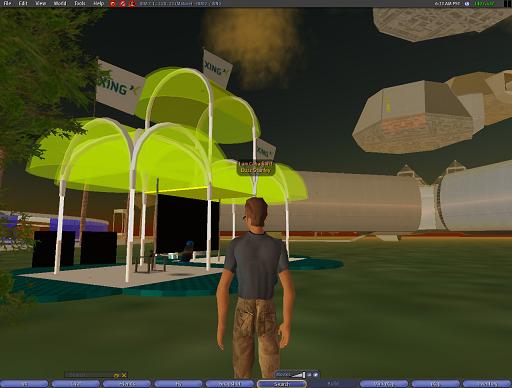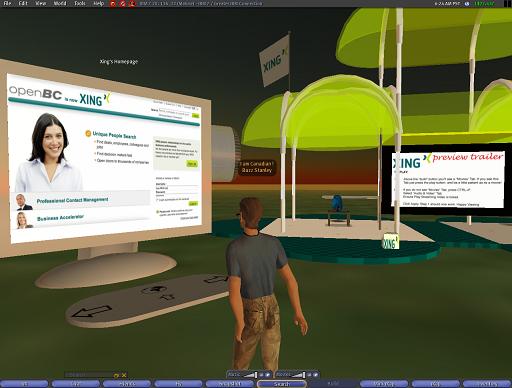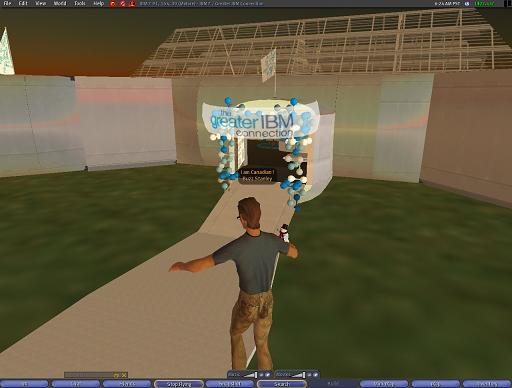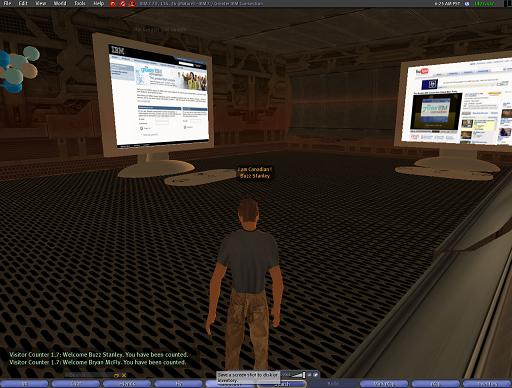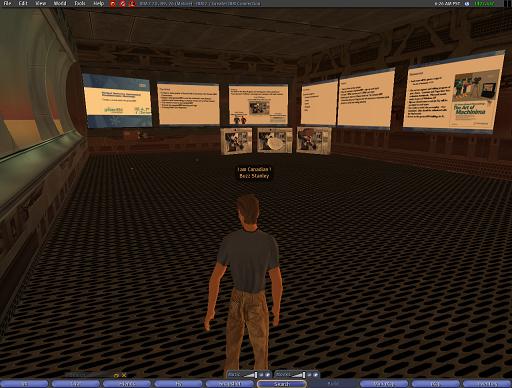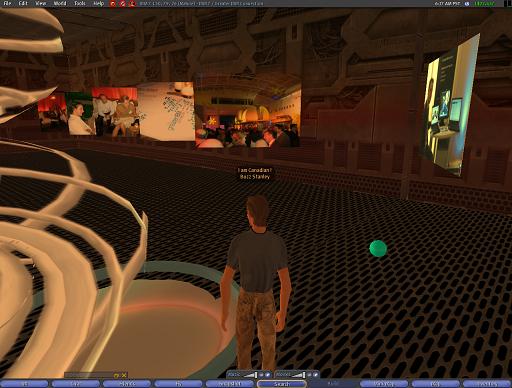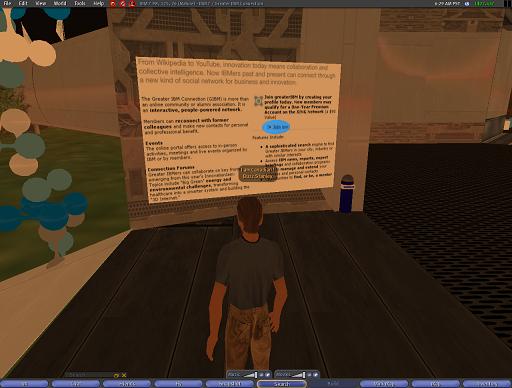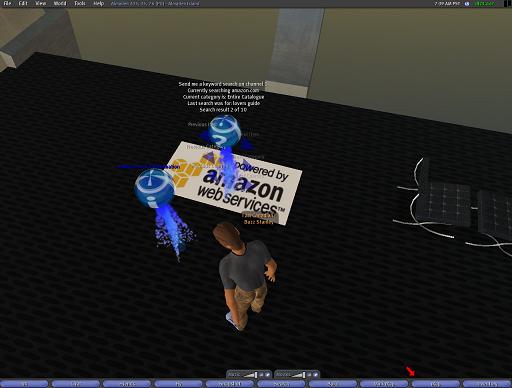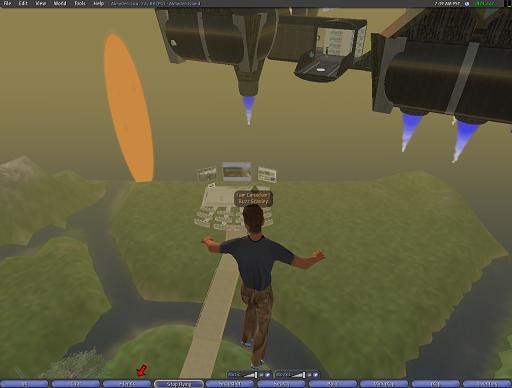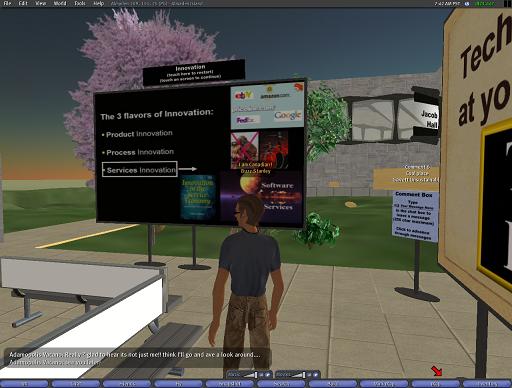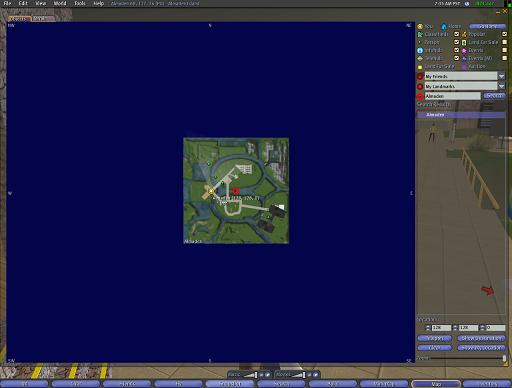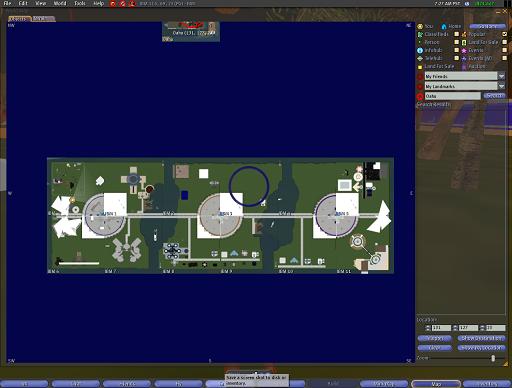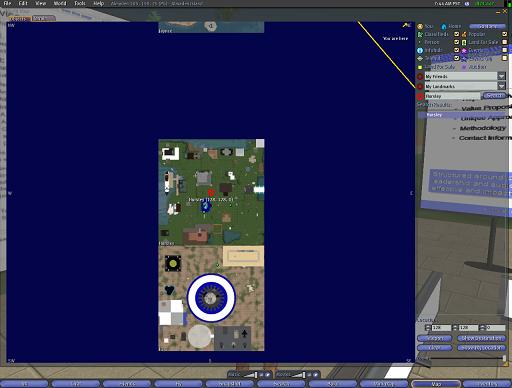Lundi C/Net [2]dévoilait les plans d’IBM et de Circuit City, de construire le magasin virtuel du futur. J’arrive tout juste des installations d’IBM ou j’ai eu la chance de prendre de nombreuses photos des îles publiques et des photos des cartes des îles privées. J’y ai noté la grande diversité d’architecture et de concepts qu’ils y ont développés ainsi qu’une forme de partenariat qu’ils ont avec la plate-forme Xing [3] (anciennement OpenBC). Ils ont aussi des endroits pour le plaisir dont des marinas avec bateau, et tutti quanti, un temple solaire Maya et plusieurs autres originalités que je vous invite à découvrir dans ce le reportage photo qui suit. Dans deux récents billets, Business communicators of Second life [4], s’entretient avec Roo Reynolds [5], l’évangéliste SL d’IBM et rapporte les propos de l’événement virtuel SL d’IBM Europe [6]. On y apprend qu’il y a maintenant 950 employés d’IBM, qui expérimentent dans Second Life et ils sont prêts à investir massivement dans les efforts et expérimentations 3D. Selon C/Net
Hughes said IBM is considering creating a virtual world that would be primarily used by its 340,000 employees for internal communications, company meetings and much more. (…)
Hughes wouldn’t say how much IBM is spending on the effort, but he did say that it is part of a group of 10 initiatives to which IBM has committed $100 million.
Humm, de gros chiffres… Mais que voit IBM dans Second Life?
Second Life is so interesting because:
a) it is built around social concepts: social gathering, collaborative “building,” the ability to bring into SL some social artifacts like music, activities (shopping, games, movies), and tools with which to create. These things mirror the social nature of 2D networked communities and the sociological shifts in network behavior.
b) It is one of the few truly “accessible” playgrounds to explore the concepts of the web as 3D.
c) SL offers immersive experiences that cannot be replicated within a 2D environment – this has potential for learning, prototyping, training, entertainment, experimentation, marketing.
d) It is opening new technological opportunities for technology developers/service providers.
I believe the early “game babies” are also driving the commercial interest in SL – and that this trend will only increase. Expectations for this just-entering-the-workforce group are high – and they will continue to exert pressure toward more immersive user interfaces.
Venez donc avec moi pour visiter (en photo) par vous-même, les installations d’IBM dans Second Life (37 photos)…

